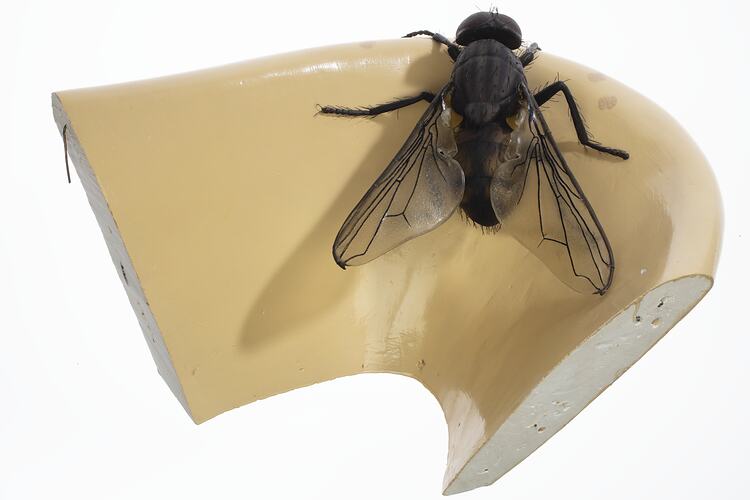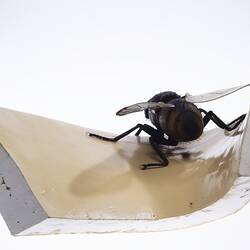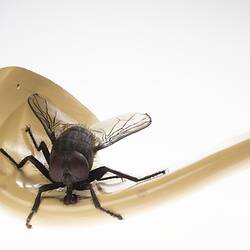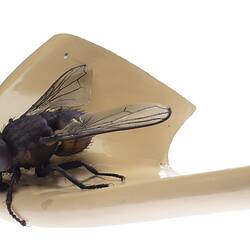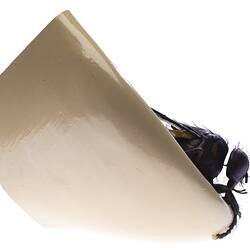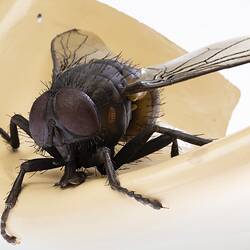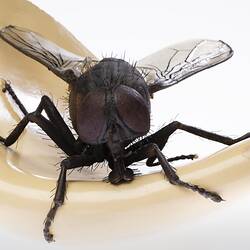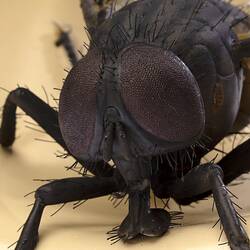Summary
Model of a house fly on lip of jug at 30x magnification, 1960s.
The jug spout and fly were part of 'The House Fly' exhibit used in the Institute of Applied Science in the 1960s. The model showed how flies could easily leave traces of their saliva and stomach contents on domestic crockery, potentially contaminating food and drink.
The exhibit drew attention to the public health aspects of house flies, noting its role in spreading diseases such as typhoid, tuberculosis, anthrax and cholera. Exhibit signage stated 'No effort should be spared to eradicate this dangerous insect'. Recommended control methods included covering garbage bins and other waste (to prevent egg-laying and larval development), using wire mesh screens and net covers, and the use of insecticides such as pyrethrin and DDT. DDT has since been banned for most agricultural and domestic purposes in a majority of countries worldwide, due to adverse effects on human health and the environment.
Physical Description
Model fly with clear plastic wings and legs outstretched, sitting on edge of beige coloured plaster spout.
More Information
-
Collecting Areas
-
Acquisition Information
Museum generated from Museum of Applied Science of Victoria, Nov 1948
-
Exhibitor
-
Classification
-
Category
-
Discipline
-
Type of item
-
Overall Dimensions
480 mm (Width), 365 mm (Depth), 290 mm (Height)
Measurement taken with plaster spout standing upright.
-
Other Dimensions
285 mm (Width), 300 mm (Depth), 100 mm (Height)
Dimension of model insect only.
-
Model Scale
x30
-
Keywords
Flies, Healthcare & Medicine, Insect Control, Insects, Pest Control
